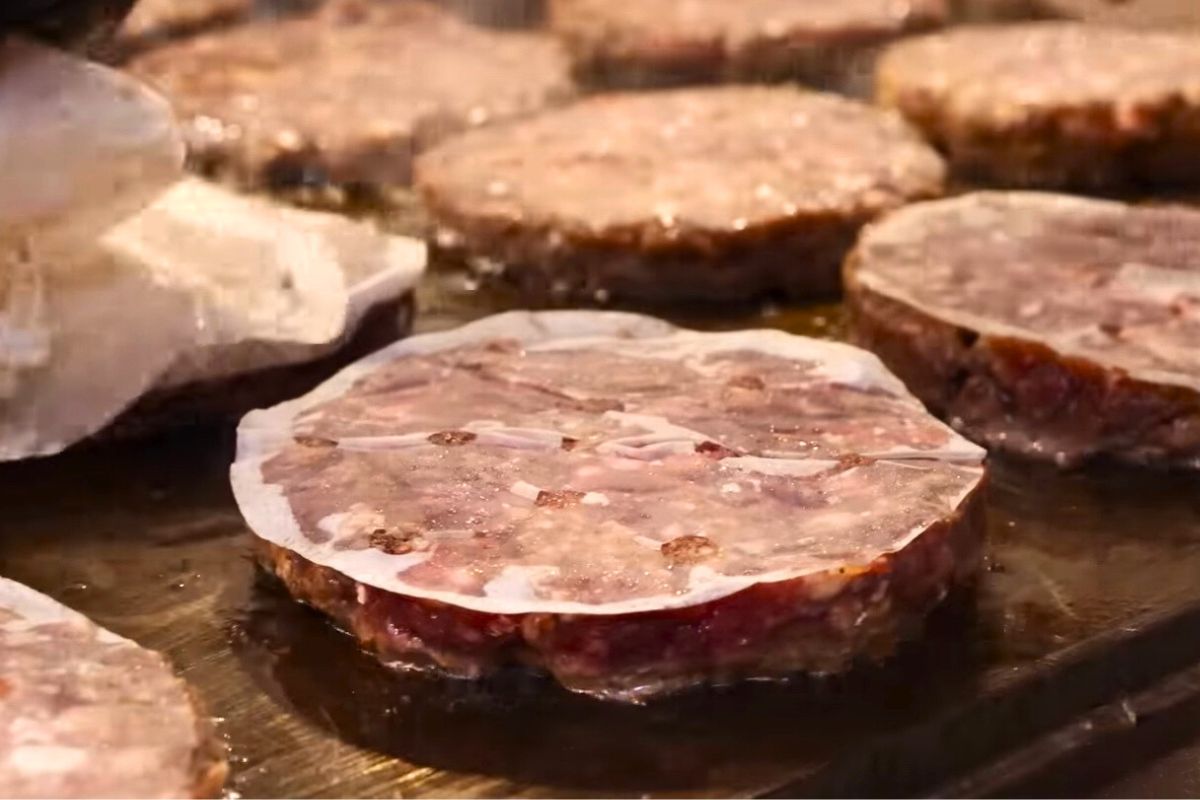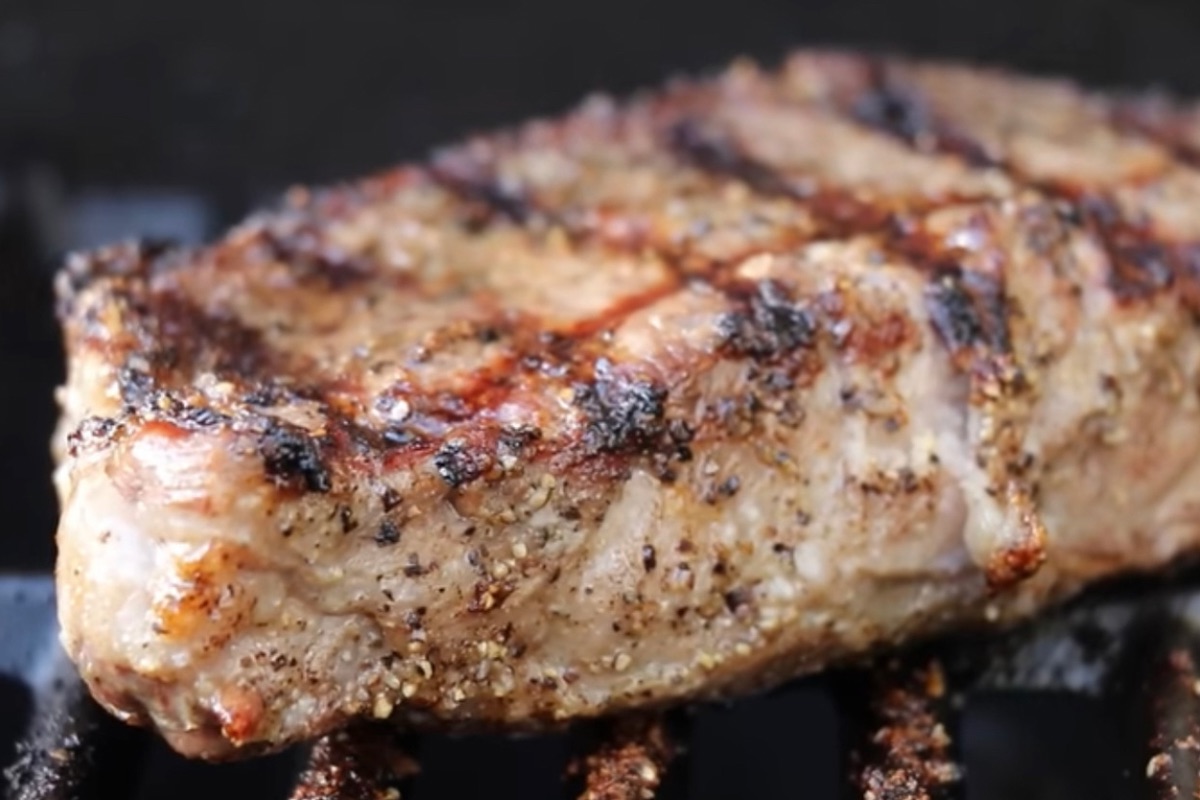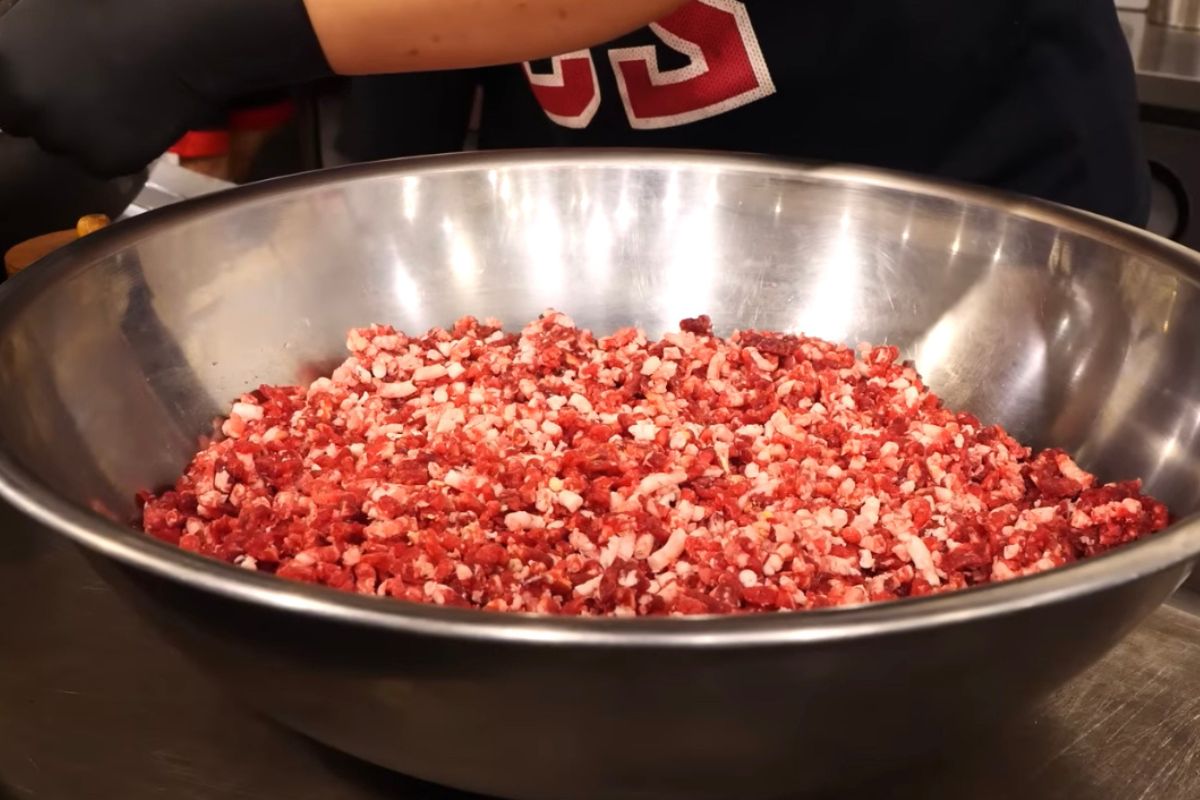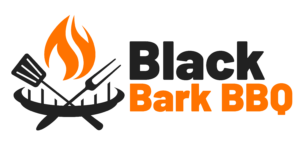For people knocking up a delicious burger at home, the USDA recommends that you cook your hamburgers until the minimum internal temperature is 160 °F (70 °C). For ground beef, the minimum recommended temperature is 155 °F (68 °C).
The key ingredient of a hamburger is ground beef, so why are the minimum recommended temperatures for the two types of meat different?

Keep reading to find out everything you need to know about cooking wonderful and delicious hamburgers safely at home.
Love a medium-rare hamburger? This article will tell you how to prepare hamburgers, so they are safe to eat below 160 °F.
Minimum Temperatures
The USDA recommends that a typical cook at home cooks hamburgers until the internal temperature reaches 160 °F (70 °C) for roughly 15 seconds.
Bacteria and other microbes found in beef cannot survive at this temperature for long. Cooking kills the bad bacteria, rendering the hamburger safe to eat as it cannot cause food poisoning or other illness.
That said, you can serve hamburgers that are a fair amount cooler. You just need to make sure that you do this safely!
Meat pasteurization is one such method. Using meat pasteurization techniques, you can serve hamburgers that are just 140 °F (60 °C).
You just need to make sure that you keep all the hamburger meat at this temperature for a little while to make sure that all the bacteria has been killed.
Holding Time
It is not necessarily just the temperature of the hamburger that kills off the bacteria – it is also the length of time that it is held at a specific temperature.
At 160 °F (70 °C), for example, all harmful bacteria cannot survive for more than 15 seconds. At lower temperatures, the required holding time to get rid of the harmful bacteria is a little longer to compensate for the decrease in heat.
The process of using time and heat to get rid of potentially harmful pathogens – ie cooking – is called meat pasteurization.
Proper use of meat pasteurization techniques will allow you to safely serve hamburgers that are cooler than 160 °F (70 °C). While a cold burger isn’t always appetizing, you can use meat pasteurization to prepare rare hamburgers safely.
Meat Pasteurization
One of the first questions that home cooks ask when thinking about meat pasteurization is whether you need any specialist equipment. Fortunately, the answer is not really!
The only thing you need is a thermometer. That said, a timer or stopwatch to hand may come in useful!
Meat pasteurization is super simple, but one thing you do need to be aware of is the recommended timings and temperature from the FDA Food Code.
For example, a hamburger is safe to serve with an internal temperature of 130 °F (55 °C) as long as it has been kept at that temperature for 90 minutes. That would be an alarmingly rare hamburger!
A hamburger with an internal temperature of 140 °F (60 °C) is safe to eat after it has been held at that temperature for 12 minutes.
As you can see, serving hamburgers below 140 °F (60 °C) is not common for practical reasons – who has an hour and a half to spend on one hamburger!?
At the other end of the scale, you have a hamburger with an internal temperature of 160 °F (70 °C). Once the hamburger gets this hot, all the harmful pathogens are instantly killed.
However, many people would find this hamburger unpleasantly tough and dry to eat.
For hamburgers, it is more about finding a balance between cooking time and desired rareness.
Why Cook A Hamburger To 160 °F?
So if a hamburger can be safe to eat at any temperature as long as it is cooked for long enough, why is 160 °F (70 °C) the default?
The answer is a largely precautionary one. At 160 °F (70 °C), some of the most harmful species of bacteria are killed just about instantaneously. These pathogens, namely Salmonella and E. coli, can cause food poisoning that can quickly become serious.
Ingesting these bacteria is considered a ‘worst case scenario’ in a domestic food preparation setting. This is why it is recommended to cook to 160 °F (70 °C) – as soon as you are at that level, the worst pathogens have gone.
Like getting technical? The moment a hamburger gets to 160 °F (70 °C), there is a 6.5D reduction in these two harmful bacteria species.
In the context of food safety, a log reduction is an accurate unit of how well cooking has lowered the concentration of harmful bacteria.
A single unit reduction means that the concentration of bacteria in the hamburger will have been reduced by a factor of 10.
So, a 1D reduction in the bacteria concentration is 90% lower than the starting point. A 6.5D reduction will therefore be a reduction of harmful bacteria concentration of over 99.9999%. Very safe indeed!
What About Steak?

We can hear the cry of every carnivore out there – but what about steak! Well, steak is a little different. You do not need to get a steak as hot as a hamburger.
This is because harmful bacteria colonies only grow on the outside of the meat.
An unprocessed cut of meat like a steak will only ever have bad pathogens on the outside, so you only need to cook the outside to render the meat safe. The untouched interior of the steak will be effectively sterile and theoretically safe to eat raw.
Once the beef is ground, the sterile inside is mixed together with the potentially contaminated outsides, and you cannot tell what is what.
This means that you must assume that all ground beef has been contaminated by harmful bacteria in order to be safe. This means you need to cook it to get rid of the pathogens.
A hamburger is made from ground beef and is not a whole or unprocessed steak. You need to be careful that you have got rid of any harmful bacteria before serving!
Ground Beef And Hamburgers
You may be aware that the FDA recommends two different minimum temperatures for ground beef and hamburgers. The CDC has adopted a similarly different position. But why have they done this?
To quote the CDC, it is easier for non-professional cooks to remember one safe cooking temperature.
With this in mind, food guidelines generally opt for the instantaneous bacteria zapping 160 °F (70 °C) so folks at home don’t need to remember a whole list of temperatures and timings from the meat pasteurization techniques discussed above.
Food agencies recommending differing minimum temperatures for ground beef and hamburgers are just an oversight!
Besides this, the temperature differences are not more than a few degrees. Navigating such a tight range is difficult at home and outside an industrial setting.
Cooking Rare Hamburgers
So, now you know a bit of the background on beef food safety, just how do you safely and expertly cook a rare hamburger?
For the purposes of this article, a rare hamburger is one that has not had the internal temperature raised to 160 °F (70 °C).
All you need to do is select your desired temperature, then look to see what the recommended holding time for your chosen temperature is.
For 140 °C (60 °C), for example, you need to keep your hamburger at that temperature for at least 12 minutes to render it safe to eat.
Anything less than 12 minutes, and you run the risk of harmful bacteria still being in your meat and potentially causing serious illness.
One thing to keep in mind is that holding times will vary depending on the size of your hamburger patty. In the following instructions, we are cooking a typical 5-oz (140g) patty.
Cooking To 140 °F
First, you need to heat your oven to 250 °F (120 °C). If you are using a grill, you don’t need to worry about this step as you can just move the hamburgers to the side, so they are not being hit by direct heat.
Now shape your patties into the size that you would like. Don’t forget to add a ¼ inch deep dimple to the center. You need the dimple to help reduce the cooking time of the center of your hamburger as the outsides cook much more quickly.
The dimple should help the cooking speeds of the outside and inside the patty match for an even cook. As meat constricts as it cooks, uncooked meat will be forced up and out, creating a little ball of beef in the middle. This is not ideal!
Once you are prepped, you need to preheat your grill or skillet pan.
Preheating for 10 minutes should be more than enough time for the surface temperature to reach somewhere between 450 °F and 500 °F (230 °C and 260 °C). You need a nice hot pan for the best sear on your hamburgers.
Place the patty on the pan or skillet so that the dimple is face down. Now you need to leave it alone to cook for 3 minutes. After 3 minutes, you need to flip it to cook the other side. The dimpled side should now be face up.
After this 6 minutes of cooking, the internal temperature of your hamburger will be around 100 °F (37 °C).
You now need to flip the burger once a minute until the internal temperature is around 140 °F (60 °C). You need to flip regularly to make sure that the patty cooks evenly.
Once at 140 °F (60 °C), it is time to put the patty into the preheated oven. Once in the oven, turn it off and set a timer for 12 minutes. The residual heat of the oven and the cooked burger meat will keep the temperature up and rising.
If you are using a grill, simply wrap up the patty in foil and move it to the side, away from direct heat.
Turn off the grill – unless you are grilling another round of hamburgers – and set a timer for 12 minutes. The residual heat of the grill and hamburger will keep the temperature up and increase a bit.
After the 12 minutes have passed, you can be certain that all the harmful bacteria have been killed off and the burger will be safe to eat. You can now serve and enjoy!
Grinding Your Own Meat

Some dedicated home cooks believe that grinding their own meat is safer than purchasing pre-ground beef. This is a particularly common belief amongst those who enjoy a rarer hamburger. But are these cooks right?
The idea is that you purchase meat to grind that has no bacteria on its surface.
Therefore, there will be no pathogens to mix in with the sterile inner of the steak, and you do not need to worry quite as much about cooking times and meat pasteurization.
Following this logic, you would be able to safely cook and then eat a hamburger that was kept a little cooler in the center and cooked quicker.
However, there are several issues with this way of thinking.
Firstly, grinding your own beef at home is not as safe as people think it is. This is because the surfaces of primal cuts of meat – including steak and roasts – are not testing for the presence of bacteria like grinding pieces of meat are.
This means that it is entirely possible that you are purchasing bacteria-laden steak without being aware of it.
Once you are home, there is no way of knowing if you have a ‘clean’ steak or one that has pathogens present on the surface.
With this in mind, you should still cook your hamburgers to a safe food standard, whatever temperature and timing that should be!
Grinding Meat For A Hamburger
As there is no way of knowing if you have a steak with no surface bacteria, some home cooks feel safer searing the outside of the meat before grinding it.
This will get rid of any surface pathogens that would contaminate the sterile inside, meaning that any meat you now grind should be harmful bacteria-free.
You can quickly and easily sear the outside of your steak by dunking it briefly but totally in boiling water.
Complete immersion in boiling water for 10 seconds could bring the surface temperature of the steak up to around 155 °F (68 °C) or even higher. This is warm enough to kill off harmful bacteria, as discussed above.
Once dunked, it is a good idea to plunge the seared steak into an ice bath. This will immediately stop the cooking process, so you are not grinding cooked beef for hamburger patties – that will never work!
Freezing Ground Beef
You may have heard that freezing beef gets rid of all harmful bacteria. But is this true?
No, it is most certainly not true. A temperature of 32 °F (0 °C) will not kill off any bacteria. These temperatures may, however, plunge any present bacteria into a state of dormancy. This could be the source of the rumors that freezing kills bacteria.
However, the bacteria become active again as soon as the ground beef is thawed. It is also super easy for defrosting food to get into the Danger Zone and stay there for a while.
The Danger Zone is anything from 40 °F to 140 °F (4 °C to 60 °C).
It is called the Danger Zone because it is at these temperatures that bacteria are active, breeding and multiplying, but not necessarily being killed. Follow proper defrosting practices to stay safe!
How To Take Internal Temperature Of A Hamburger
To get the most accurate temperature reading, you need to insert the probe end of the thermometer into the center of the patty.
For the avoidance of doubt, you are skewering the patty from the side towards the center and not from the top!
If you have an instant-read thermometer, you will need to take it out after the temperature has registered.
If, however, you have a continuous read thermometer that can be left in the meat you don’t need to do anything. These types of thermometers usually have a separate display to make using them easier.
Is Raw Beef Safe To Touch
As long as you are careful to avoid cross-contamination, raw beef is safe to touch with your hands. One key thing to remember is that you need to wash your hands after handling it and before you touch anything else!
Failure to wash your hands will lead to raw beef bits being spread around your cooking area, increasing the chances of you accidentally ingesting some potentially harmful bacteria.
But just how do you handle raw beef safely at home?
How To Handle Raw Beef Safely
Most raw meat safety handling is common sense. Proper storage, for example, will dramatically reduce your potential exposure to raw beef pathogens.
At the very least, you need to make sure that raw meat is not stored near foods that can be eaten raw. Fruits and vegetables, for example, should be stored above raw meat in the fridge or in a separate draw, so liquids can’t drip onto them.
When you are ready to cook your raw meat, you need to make sure that it does not drip onto any other foods or surfaces.
You also need to make sure that it is all thoroughly defrosted. Cooking frozen meat will make it difficult for you to reach the minimum recommended temperature for safe eating.
When you have finished handling raw meat, you need to wash your hands with hot and soapy water.
All traces of raw meat will be removed, and you will not be able to cross-contaminate anything else. This will keep yourself and others in your home safe from harmful bacteria.
What Temperature Does My Burger Need To Be
Now we have gone through everything you need to know about safely preparing hamburgers, how do you know what internal temperature you are aiming for? Here is a rough guide, so you can cook your hamburgers to your preference.
- A well done hamburger: 160 °F (70 °C)
- A medium well hamburger: 150 °F (65 °C)
- A medium hamburger: 140 °F (60 °C)
- A medium rare hamburger: 130 °F (55 °C)
- A rare hamburger: 120 °F (50 °C)
Remember that this is a rough guide, so it is always worthwhile experimenting to find out what you like from your hamburger.
One other thing to remember is that harmful bacteria are killed instantly at 160 °F (70 °C). At all other temperatures, you need to hold the hamburger at that temperature for several minutes.
If you are aiming for a medium hamburger, for example, you will need to keep the inside of the patty at 140 °F (60 °C) for 12 minutes.
Follow our instructions for cooking to 140 °F (60 °C) for the best medium hamburger every time.
Final Thoughts
Cooking a delicious burger safely requires a bit of skill and know-how.
In general, it is recommended that you cook a hamburger until the internal temperature is 160 °F (70 °C). At this temperature, the most harmful bacteria are killed instantly.
It is because the meat becomes safe instantaneously that this temperature is recommended by food agencies.
However, you can cook hamburgers to cooler temperatures if you are careful to cook for the appropriate amount of time.
A patty with an internal temperature of 140 °F (60 °C), for example, is safe to eat as long as it is kept at 140 °F (60 °C) for 12 minutes. All harmful bacteria will be killed after this window.
Keep in mind that cooler temperatures do not mean a cold hamburger – that would be just unappetizing! Cooler internal temperatures will actually result in a rarer final hamburger.
- Porterhouse Vs. Ribeye - May 16, 2022
- How Long To Smoke A Brisket Per Pound – Explained - May 16, 2022
- What Is A Tomahawk Steak? - May 16, 2022








